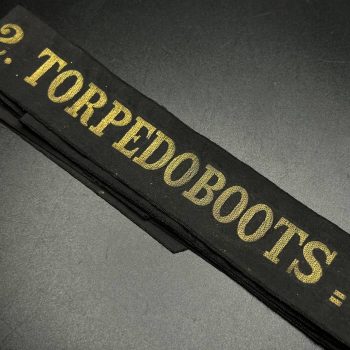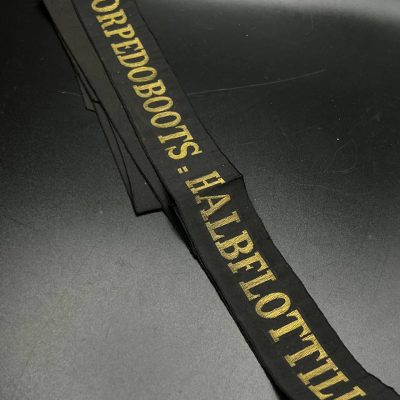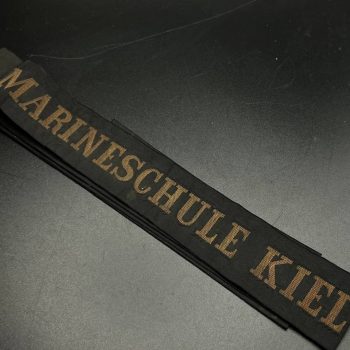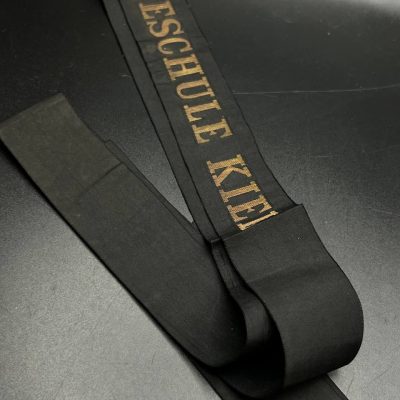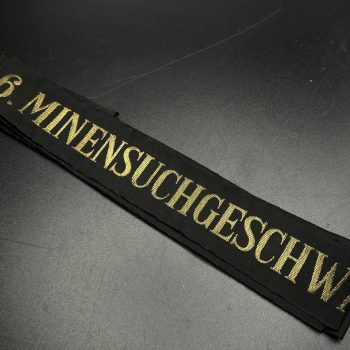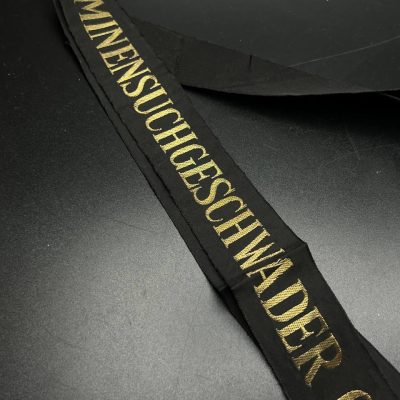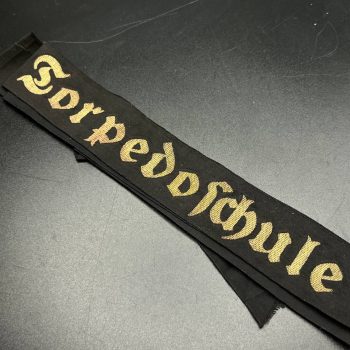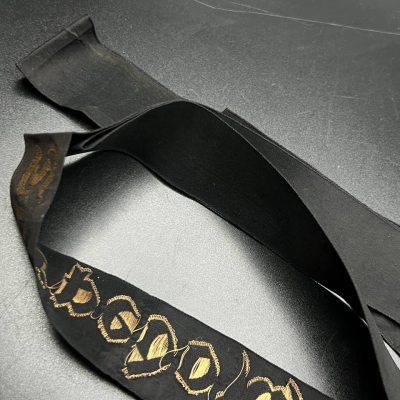Showing all 4 results
Filters-
Kriegsmarine Cap Tally Ribbon “2. TORPEDOBOOTS-HALBFLOTTILLE” (Lot: 561)
Starting bid: $ 140Original Kriegsmarine cap tally ribbon for the 2nd Torpedo Boat Half-Flotilla. Made of black silk with a matte wartime finish. The inscription is executed in gold machine embroidery, showing the correct density, stitch pattern, and reverse thread structure typical of period manufacture.
Ribbon ends are neatly tapered and finished. Excellent condition overall — bright intact embroidery and clean silk. Fully original wartime piece.
-
Kriegsmarine Cap Tally Ribbon “MARINESCHULE KIEL” (Lot: 562)
Starting bid: $ 110Original Kriegsmarine cap tally ribbon for the Marineschule Kiel naval training school. Made of black silk with a matte wartime finish. The inscription is executed in gold machine embroidery, displaying the correct thread density and authentic period stitching on the reverse.
Both ends are neatly tapered and properly finished. Excellent condition overall — intact silk and bright, complete embroidery. A fully original Kriegsmarine item.
-
Kriegsmarine Cap Tally Ribbon “6. MINENSUCHGESCHWADER” (Lot: 564)
Starting bid: $ 95Original Kriegsmarine cap tally ribbon for the 6th Minesweeping Squadron (6. Minensuchgeschwader). Made of black silk with a clean matte finish. The inscription is executed in gold machine embroidery, using dense metallic-style thread with correct period stitching visible on the reverse.
Ends are neatly folded and stitched. Excellent collectible condition — intact silk and bright, complete embroidery. Fully original wartime item.
-
Kriegsmarine Cap Tally Ribbon “TORPEDOSCHULE” (Lot: 563)
Starting bid: $ 90Original Kriegsmarine cap tally ribbon for the Torpedo School (Torpedoschule). Made of solid black silk. The inscription is rendered in gold machine embroidery in a Gothic script, with the correct thread density and period stitching visible on the reverse.
Ends are neatly folded and stitched. Excellent condition overall — strong silk, clean color, and bright intact embroidery. A fully original wartime piece.
